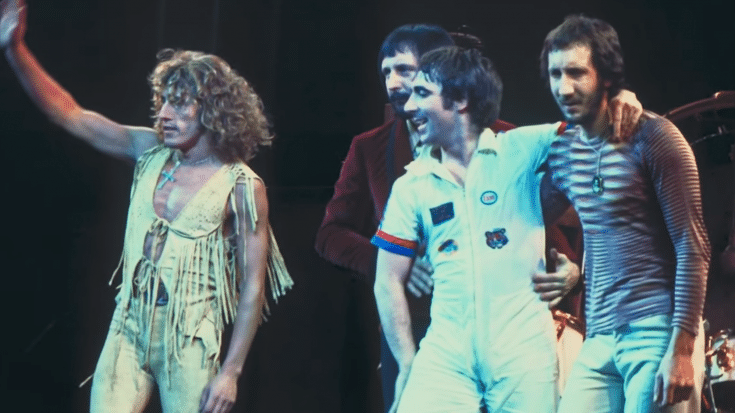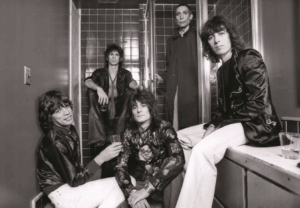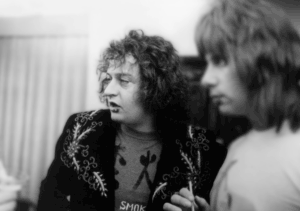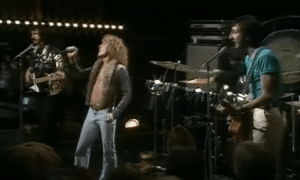The 6 Most Disastrous Rock Concerts Ever Held

via KVUE / YouTube
Concert disasters have often resulted from the combination of massive crowds, inadequate crowd control measures, and unfortunate circumstances. Below we take a look at the 6 Most Disastrous Rock Concerts Ever Held:
The Who – Cincinnati Riverfront Stadium (1979)
In 1979, The Who performed a highly anticipated concert at Cincinnati Riverfront Stadium. The event was attended by over 18,000 fans, but unfortunately, only 25 police officers were assigned for crowd control. This inadequate number of officers would prove to be a crucial factor in the events that unfolded.
The concert was scheduled to begin at 8 PM, but by 7:45 PM, the doors were still closed, leaving the crowd growing increasingly anxious. Compounded by the fact that the audience had been hearing The Who’s warm-up acts, they mistakenly believed that the show was about to start, causing a surge of fans towards the doors.
Adding to the chaos was the fact that 80 percent of the tickets sold were for general admission seating, meaning there was no assigned seating. This further fueled the rush for entry as fans vied for the best possible view of the performance.
Tragically, the situation quickly spiraled out of control. The surge of fans towards the doors resulted in a stampede, leading to the deaths of eleven people and numerous injuries. This devastating incident prompted the implementation of new regulations to ensure order and safety during large concerts, regulations that are still practiced today.
Pearl Jam – Denmark (2000)
In June 2000, tragedy struck during Pearl Jam’s performance at the Danish Roskilde festival. This unfortunate incident, which occurred on the night of June 30, resulted in the deaths of nine concertgoers, leaving a profound impact on both the music industry and the festival itself.
On that fateful Friday morning, news of the incident spread rapidly, sending shockwaves through the community. The radio confirmed the unsettling reports, amidst the chaotic scene of ambulances, police, and blaring sirens. The festival, a veteran event that had seen more than a dozen successful editions, now bore a somber atmosphere.
Eyewitnesses recalled the concert starting on a high note, with a tremendous amount of energy in the air. However, there were concerns about the sound quality, prompting some attendees, including Jesper Engsted, a 31-year-old Dane and frequent festival-goer, to move closer to the stage. Little did they know that this decision would have dire consequences.
As more and more people pushed forward towards the front rows, a dangerous level of pressure built up in the crowd. The festival’s headliners, including Pearl Jam, The Cure, Oasis, Iron Maiden, Lou Reed, and Willie Nelson, attracted a massive audience, exacerbating the situation.
Tragically, the pressure reached a breaking point, resulting in an avalanche that claimed the lives of nine individuals. The loss of these lives cast a dark cloud over the festival, leaving a deep impact on everyone involved.
This incident served as a wakeup call for both the music industry and festival organizers, highlighting the need for enhanced safety measures and crowd control protocols. It sparked discussions, investigations, and changes aimed at preventing similar tragedies in the future.
The Rolling Stones – Altamont Speedway Tragedy (1969)
On December 6, 1969, the music world witnessed one of the darkest days in rock and roll history during the Altamont Speedway festival. Headlined by The Rolling Stones, this event forever altered the perception of live music due to its tragic and disastrous consequences. Poor organization and a series of unfortunate circumstances led to a chaotic and violent atmosphere that would leave an indelible mark on the industry.
From the start, it was evident that the festival was plagued with problems. The audio quality was subpar, and the stage was far from the spectacular setup that had been anticipated. As a result, attendees became frustrated and voiced their disappointment, fueling an atmosphere of anger and tension.
As the situation escalated, security personnel were ill-equipped to handle the mounting aggression from the crowd. Chaos erupted, and the event quickly descended into a complete disaster. Upon the arrival of The Rolling Stones by helicopter, even the band members were not spared from the violence, with Mick Jagger being greeted with a punch to the face.
By the time The Rolling Stones finally took the stage, the atmosphere had turned into a bloodbath. Amidst the turmoil, an 18-year-old named Meredith Hunter tragically lost his life. He was stabbed to death, becoming a symbol of the extreme violence and devastation that unfolded during the ill-fated concert.
The Altamont Speedway tragedy forever changed the perception of music festivals and highlighted the crucial need for proper security measures and overall organization to ensure the safety of both performers and attendees.
AC/DC – Salt Lake City (1991)
The night was January 18, 1991, and it was a highly anticipated evening as more than 13 thousand fans gathered at the venue in Salt Lake City to experience the electrifying performance of AC/DC. Little did they know that this concert, which was meant to be a night of pure enjoyment, would turn into a tragic event.
As the crowd eagerly awaited the start of the show, the atmosphere was charged with excitement. Attendees pushed towards the stage, craving to be as close as possible to their favorite rock icons. The energy was palpable, but unfortunately, it soon took a dark turn.
As AC/DC took the stage and launched into their explosive setlist, the heavy metal militia unleashed their passion, thrusting their bodies forward with an unstoppable force. The immense crowd surged forward, creating a chaotic and dangerous mosh pit. In the midst of this intense chaos, tragedy struck.
The immense pressure from the surging crowd caused people in the front rows to collapse, their torsos and heads exposed to the unforgiving boots of the heavy metal fans. It was a horrifying scene, one that no one expected or could have prepared for.
Amidst this turmoil, three teenagers tragically lost their lives. The concert that was supposed to be a celebration of music and unity turned into a devastating incident, leaving a lasting mark on the history of AC/DC and the city of Salt Lake.
In the aftermath of the incident, investigations took place to determine what went wrong and how such a tragedy could have occurred. Concert safety measures were reevaluated, with a focus on crowd control and ensuring the well-being of fans attending future events.
Despite the unimaginable loss and the injuries suffered by many, it’s important to remember that the intentions of the concert-goers were not malicious. They were simply caught up in the intense exuberance that comes with experiencing live music from one of the world’s greatest rock bands.
Rock World Series – Cleveland (1979)
The Rock World Series, held in Cleveland in 1979, was a renowned music festival that brought together some of the most iconic bands of the era. Set against the backdrop of the Rock ‘n Roll Hall of Fame’s birthplace, the event promised to be a celebration of rock music like no other. However, what transpired that year would forever taint the festival’s history.
With a lineup that included legendary acts such as AC/DC, Aerosmith, Journey, Scorpions, Ted Nugent, and Thin Lizzy, the 1979 edition of the Rock World Series drew a staggering attendance of over 88 thousand eager fans. The vast crowd created an exhilarating and charged atmosphere, but unfortunately, chaos soon ensued.
Despite the anticipation and excitement, the festival was marred by incidents of violence that disrupted the show. Tragically, at least five people were shot, and one life was lost. Gang violence, vandalism, and robberies plagued the event, leaving attendees and organizers shocked and devastated.
The exact motives behind these acts of senseless violence remain unclear. However, it is believed that envy played a significant role. Reports surfaced of marauding fans attacking those seated in the best sections of the rock concert, possibly driven by jealousy and a desire for more prime viewing spots.
The incidents of violence that unfolded during the 1979 Rock World Series were a stark departure from the spirit of unity and celebration that the festival had aimed to promote. Authorities and organizers swiftly responded, implementing measures to enhance security and prevent further outbreaks of violence at future events.
Despite the tragic occurrences, it is essential to remember that the Rock World Series was also a platform for showcasing the unforgettable talents of rock music’s greatest icons.
Guns N’ Roses – Montreal (1992)
The Guns N’ Roses concert in Montreal on August 8, 1992, held at the Montreal Olympic Stadium, started as a highly anticipated night for the approximately 50,000 fans in attendance. The concert featured two of the biggest rock bands of the time, Metallica and Guns N’ Roses, who were on tour together.
However, the evening took a turn for the worse when an accident occurred during Metallica’s performance. James Hetfield, Metallica’s lead singer and guitarist, was engulfed in a fireball on stage during their song “Fade to Black.” Hetfield later recounted the incident, describing how he was momentarily confused and walked back and forth, unaware that the person in charge of the pyrotechnics did not see him behind. The flame came out right under his feet, prompting him to turn around and narrowly avoiding a life-threatening situation.
In the aftermath of the accident, chaos erupted among the fans. Instead of enjoying the concert, many attendees started to wreak havoc, causing extensive damage to the stadium and engaging in confrontations with the police. Patrol cars were overturned, and various acts of vandalism took place. What was meant to be a celebration turned into a night of destruction and turmoil within the span of just an hour.
The reasons behind the fans’ violent reactions are complex and multifaceted. Some speculate that the combination of frustration from the accident and a lack of proper crowd control measures contributed to the unfolding events. It is important to note that the actions of a few individuals should not overshadow the majority of fans who were there for the music and behaved responsibly.
The Guns N’ Roses concert in Montreal in 1992 was a reminder of the potential for unexpected incidents to disrupt what should be joyful and memorable music events. Concert organizers and security personnel have since emphasized the importance of safety measures and crowd control to minimize such occurrences and ensure the well-being of all attendees.
Despite the unfortunate turn of events, it is crucial to remember the significance of the music and the impact that these bands, such as Guns N’ Roses and Metallica, have had on the rock genre.
























